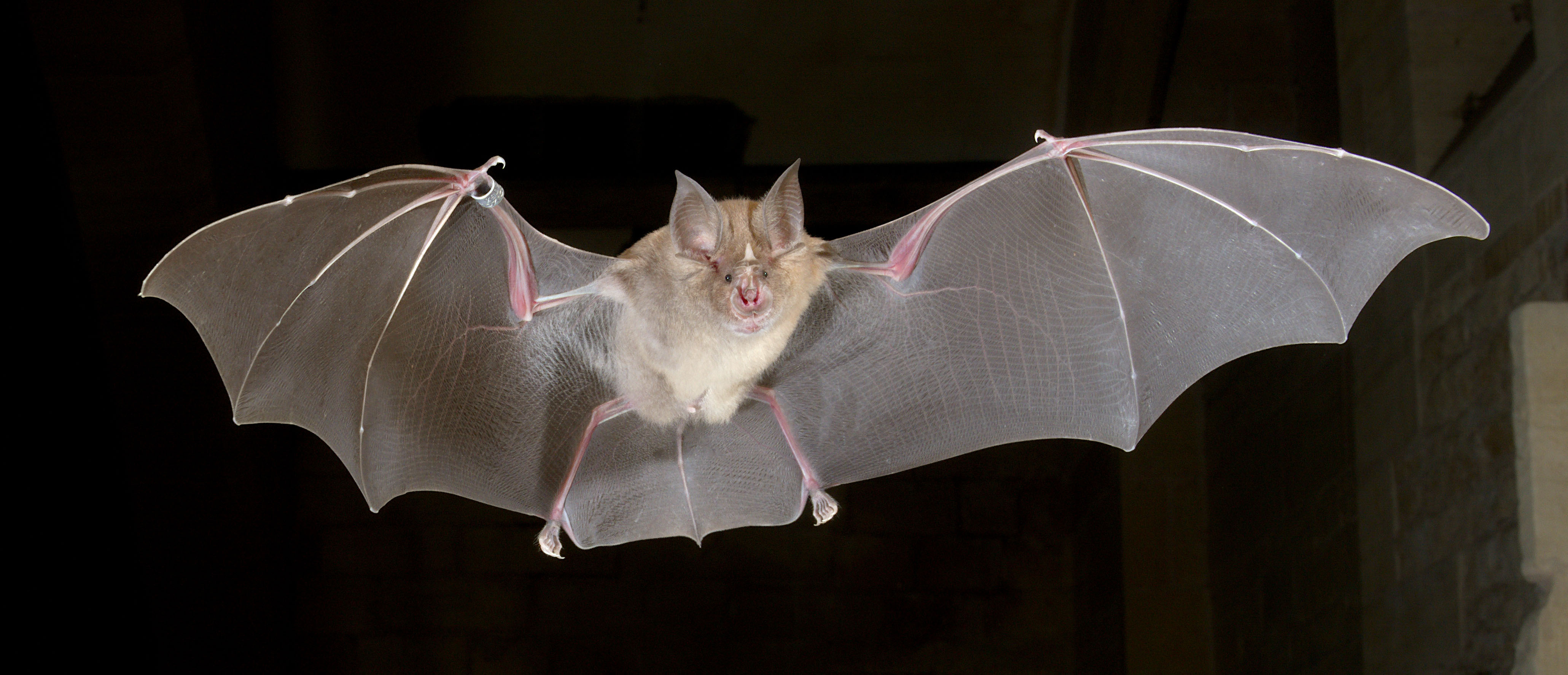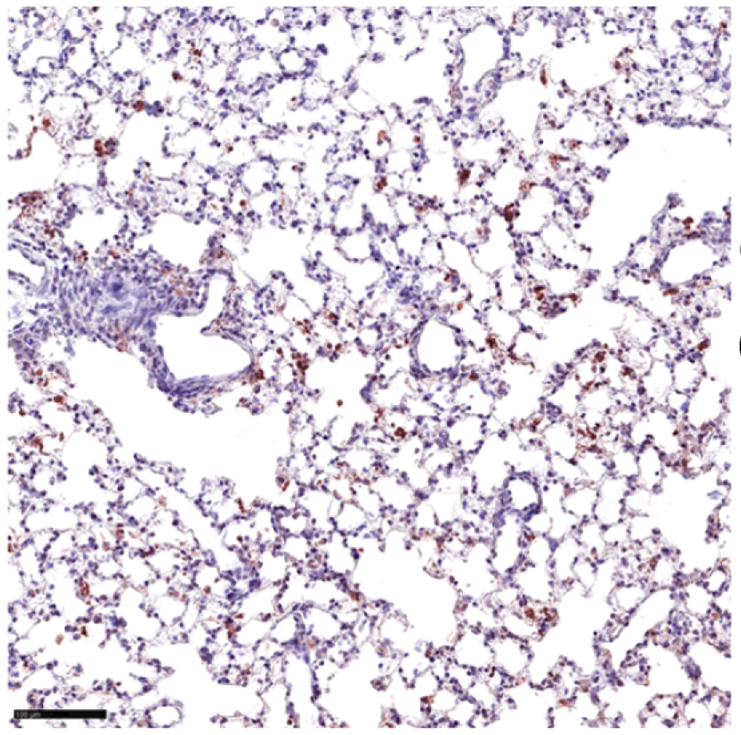A new study has revealed for the first time the vital role carbon dioxide (CO2) plays in determining the lifespan of airborne viruses – namely SARS-CoV-2, the virus that causes COVID-19. It clearly showed keeping CO2 levels in check helps to reduce virus survival, and therefore the risk of infection.
Tag: SARS-CoV-2
Georgia Tech Researchers Develop More Broadly Protective Coronavirus Vaccine
Researchers at the Georgia Institute of Technology and the University of Wisconsin-Madison have developed a new vaccine that offers broad protection against not only SARS-CoV-2 variants, but also other bat sarbecoviruses.
Research offers hope for preventing post-COVID ‘brain fog’ by targeting brain’s blood vessels
In a study of mice, researchers identified a mechanism that causes post-infection neurological problems
New Study Reveals Insights into Lack of Durability in COVID Antibody Response to Infections and Vaccines
Researchers at the Institute of Human Virology (IHV) at the University of Maryland School of Medicine published a new study in the Journal of Infectious Diseases investigating the short-lived antibody response following SARS-CoV-2, the virus that causes COVID.
How the SARS-CoV-2 virus acquires its spherical shape
For centuries, coronaviruses have triggered health crises and economic challenges, with SARS-CoV-2, the coronavirus that spreads COVID-19, being a recent example.
Measles: How to Spot it, When to Seek Care and Importance of Vaccination
As the Measles outbreak continues to grow in Florida, Francesca Torriani, MD, infectious disease specialist with UC San Diego Health is available to discuss symptoms to look out for, when to seek medical care, and the importance of vaccination. Biography…
Vaping can increase susceptibility to infection by SARS-CoV-2
Vapers are susceptible to infection by SARS-CoV-2, the virus that spreads COVID-19 and continues to infect people around the world, a University of California, Riverside, study has found.
Long COVID linked to persistently high levels of inflammatory protein: a potential biomarker and target for treatments
SARS-CoV-2 triggers the production of the antiviral protein IFN-γ, which is associated with fatigue, muscle ache and depression. New research shows that in Long COVID patients, IFN-y production persists until symptoms improve, highlighting a potential biomarker and a target for therapies.
Johns Hopkins Medicine-Led Study Shows Rapid COVID-19 Tests Done at Home are Reliable
In a study involving nearly 1,000 patients seen at the Baltimore Convention Center Field Hospital (BCCFH) during a five-month period in 2022 — researchers at Johns Hopkins Medicine, the University of Maryland School of Medicine and five other collaborators report that a rapid antigen test (RAT) for detecting SARS-CoV-2, the virus that causes COVID-19, can be used at home with accuracy comparable to the same test being administered by a health care professional.
Infectious Disease Expert Available: Flu Season, COVID-19 Variant and other Respiratory Viruses
In the United States, flu season usually occurs in the fall and winter, and while influenza viruses spread year-round, most of the time flu activity peaks between December and February. The overall impact of the flu varies from season to…
Antiviral drug linked to SARS-CoV-2 mutations
Researchers at the Francis Crick Institute, the University of Cambridge, Imperial College London, the University of Liverpool, the University of Cape Town and UKHSA have uncovered a link between an antiviral drug for COVID-19 infections called molnupiravir and a pattern of mutations in the SARS-CoV-2 virus.
New SARS-CoV-2 variant Eris on the rise
As a result of vaccination or infection, our immune system produces antibodies that attach to the spike protein of SARS-CoV-2, preventing the virus from entering and replicating within cells.
COVID-19 virus is evolving rapidly in white-tailed deer
White-tailed deer across Ohio have been infected with the virus that causes COVID-19, new research has found – and the results also show that viral variants evolve about three times faster in deer than in humans.
Long-Term Study Reaffirms Benefits of Covid-19 Vaccination for Organ Transplant Recipients
A two-year study found that spikes of post-vaccination SARS-CoV-2 viral infections (commonly known as COVID-19 breakthrough cases) remain common, yet hospitalization rates have dramatically dropped following the first wave of the virus’ omicron subvariant.
VUMC receives $28 million to lead national study of COVID-diabetes link
Researchers at Vanderbilt University Medical Center have received a four-year, $28 million grant from the National Institute of Diabetes and Digestive and Kidney Diseases, part of the National Institutes of Health, to study the relationship between COVID-19 and diabetes.
Long Covid not caused by COVID-19 immune inflammatory response, new research finds
Long Covid, which affects nearly two-million people in the UK (1), is not caused by an immune inflammatory reaction to COVID-19, University of Bristol-led research finds. Emerging data demonstrates that immune activation may persist for months after COVID-19.
Scientists discover critical factors that determine the survival of airborne viruses
Critical insights into why airborne viruses lose their infectivity have been uncovered by scientists at the University of Bristol. The findings, published in the Journal of the Royal Society Interface today [20 June], reveal how cleaner air kills the virus significantly quicker and why opening a window may be more important than originally thought. The research could shape future mitigation strategies for new viruses.
People coinfected with SARS-CoV-2 and cytomegalovirus are at increased risk of developing cardiovascular disease
Cytomegalovirus (CMV) is one of the most prevalent herpesviruses worldwide. Depending on the geographical area, it can affect between 40% and 90% of the population and, although it does not produce symptoms in healthy people, the control of this chronic infection requires constant work by the immune system, which is constantly fighting to keep it at bay.
IL-10 promotes tissue-resident memory T cells (TRM) in the respiratory tract during SARS-CoV-2 infection in rhesus macaques
T cells are thought to be important for control of SARS-CoV-2 infection, but little is known about the host factors that promote T cell responses in the respiratory tract. We used non-human primates to investigate the regulation of respiratory immunity…

VUMC-Led Trial Shows Two Investigational Drugs Are Ineffective for Treating Severe COVID-19
A study published April 11 in the Journal of the American Medical Association (JAMA) evaluated two drugs that act on the renin-angiotensin system (RAS) as potential treatments for severe COVID-19. Severe acute respiratory syndrome coronavirus2 (SARS-CoV-2), the virus that causes COVID-19, enters pulmonary and myocardial cells through binding of its spike protein to the human angiotensin-converting enzyme 2 (ACE2). ACE2 is a vital enzyme that controls blood pressure and blood flow to multiple organs, including the lungs, heart and kidneys.
Researchers Reveal Why Viruses Like SARS-CoV-2 Can Reinfect Hosts, Evade the Immune Response
The human body is capable of creating a vast, diverse repertoire of antibodies—the Y-shaped sniffer dogs of the immune system that can find and flag foreign invaders.
Case Study Shows COVID-19 Can Be Transmitted from Mother to Baby Through Placenta, Causing Brain Injury
Researchers have shown that, in two cases, COVID-19 infection breached the placenta and caused brain damage in the newborn.
SARS-CoV-2 mRNA booster vaccinations increased and sustained the antibody responses
Booster vaccinations against severe acute respiratory syndrome coronavirus 2 (SARS-CoV-2) are being promoted worldwide to counter the coronavirus disease 2019 (COVID-19) pandemic.
New method for the detection of RNA viruses such as SARS-CoV-2
Experts from the University of Barcelona, the Institute for Advanced Chemistry of Catalonia (IQAC-CSIC), the Institute of Microelectronics of Barcelona (IMB-CNM-CSIC) and the Aragon Nanoscience and Materials Institute of Aragon (INMA) —a joint institute of the CSIC and the University of Zaragoza— have developed a new method to detect RNA viruses based on the triplex-forming probe technology.
More than half of COVID patients suffer long COVID symptoms
Various long-term effects have been found to occur after infection by the novel coronavirus (COVID-19), and the reality of these lingering symptoms remains unknown.

First Stem Cells From a Bat Species Known to Harbor SARS-CoV-2 Could Shed Light on Virus Survival and Molecular Adaptability
Researchers from the Icahn School of Medicine at Mount Sinai have generated the first induced pluripotent stem cells (iPSCs) from bats, gaining valuable insights into the close relationship between bats and viruses.
COVID-19 Vaccination Linked to Fewer Cardiac Events
Analyzing the most extensive datasets in the U.S., researchers from the Icahn School of Medicine at Mount Sinai have revealed that vaccination against COVID-19 is associated with fewer heart attacks, strokes, and other cardiovascular issues among people who were infected with SARS-CoV-2, the virus that causes COVID-19. The research letter, “Impact of Vaccination on Major Adverse Cardiovascular Events in Patients with COVID-19 Infection,” was published in the Journal of the American College of Cardiology on February 20. The research will also be presented on March 5, 2023 in a poster session in New Orleans, LA, at the American College of Cardiology’s 72nd Annual Scientific Session Together With World Heart Federation’s World Congress of Cardiology.
Weaponizing Part of the SARS-CoV-2 Spike Protein Against Itself to Prevent Infection
ROCKVILLE, MD – The virus that causes COVID-19, called SARS-CoV-2, uses its spike protein in order to stick to and infect our cells. The final step for the virus to enter our cells is for part of its spike protein to act like a twist tie, forcing the host cell’s outer membrane to fuse with the virus. Kailu Yang, in the lab of Axel Brunger, colleagues at Stanford University, and collaborators at University of California Berkely, Harvard Medical School, and University of Finland have generated a molecule based on the twisted part of the spike protein (called HR2), which sticks itself onto the virus and prevents the spike protein from twisting.
Tobacco and e-cigs may put healthy young people at risk of severe COVID illness, new UCLA research suggests
Smoking tobacco and vaping electronic cigarettes may increase healthy young people’s risk for developing severe COVID illness.
Breakthrough COVID-19 cases occur in 7.5% of vaccinated Texas participants, according to UTHealth Houston survey; subgroups at higher risk identified
Breakthrough COVID-19 infections after vaccination occurred in 7.5% of Texans surveyed and were linked to Hispanic ethnicity, larger household size, rural versus urban living, type of vaccination, and multiple comorbidities, according to findings from UTHealth Houston School of Public Health published today in the Journal of Infectious Diseases.
Surge of SARS-CoV-2 Variants in China and USA Further Emphasizes Need for Surveillance, Preparedness, and International Collaborations
Christian Bréchot, MD, PhD, President of the Global Virus Network (GVN), Associate Vice President for International Partnerships and Innovation at the University of South Florida and Professor of the Division of Infectious Disease, Department of Internal Medicine at USF Health Morsani College of Medicine, the GVN Southeast U.S. Regional Headquarters today issued a statement on the surge of SARS-CoV-2.
Data Analytics Could Prevent Testing Bottlenecks During Future Pandemics
Breaking research demonstrates the efficacy of two data analytics-based strategies that clinical labs employed to meet COVID-19 testing demands during the height of the pandemic. These findings, published in the Data Science Issue of AACC’s The Journal of Applied Laboratory Medicine, give labs a blueprint for using data analytics to ensure patient access to testing during future infectious disease outbreaks.
Researchers Leverage Pathogen “Fingerprints” in Blood to Accelerate Infection Diagnosis
MEDIA ADVISORY UNDER EMBARGO UNTIL DECEMBER 21, 2022 in Cell Systems Corresponding Authors: Elena Zaslavsky, PhD, Associate Professor of Neurology, Icahn School of Medicine at Mount Sinai; Steven H. Kleinstein, PhD, Anthony Brady Professor of Pathology at Yale School of…
Surgical Risk Persists for Patients Who’ve Had COVID
When patients undergo any type of surgery after having had COVID, their odds of significant postoperative problems diminish with elapsed time from COVID diagnosis.
Researchers at Vanderbilt University Medical Center now report that this trend of decreasing risk persists longer than previously known, for as long as 13 months after surgery. Their report appeared Dec. 14 in JAMA Network Open.
Mount Sinai Study Links Molecular Changes to Long COVID a Year After Hospitalization
Study is one of the first to associate long COVID symptoms with changes in gene expression during acute COVID-19
Dramatic change in proportion of the Canadian population with SARS-CoV-2 antibody over the first 2.5 years of pandemic
By August 2022, most children and adults younger than 60 years in Canada had been exposed to SARS-CoV-2 through a combination of vaccination and infection, according to a large study looking at blood antibodies published in CMAJ (Canadian Medical Association Journal)
Clover’s vaccine candidate reduced household transmission of SARS-CoV-2 in study
The study, a collaboration between Clover and the International Vaccine Institute, showed that a household contact was 84% less likely to get a SARS-CoV-2 infection when the infected household member had received SCB-2019 (CpG 1018/Alum) compared to placebo
Pocket feature shared by deadly coronaviruses could lead to pan-coronavirus antiviral treatment
Researchers of the University of Bristol-led study, published in Science Advances today [23 November], say their findings could lead to the development of a pan-coronavirus treatment to defeat all coronaviruses.
A growing trend of antibody evasion by new omicron subvariants
Three currently circulating omicron subvariants of SARS-CoV-2 – including two that currently make up almost 50% of reported COVID-19 infections in the U.S. – are better at evading vaccine- and infection-generated neutralizing antibodies than earlier versions of omicron, new research suggests.
Some Healthcare Workers Produced a Low Response to COVID-19 Vaccinations in a Study by Cedars-Sinai
A subset of healthcare workers vaccinated against COVID-19 had unexpectedly low responses to the immunizations, according to Cedars-Sinai investigators. The findings of the new study are published in iScience, a Cell Press journal.
Study uncovers mechanisms necessary for SARS-CoV-2 infection in macrophages
Dysregulation of macrophages during SARS-CoV-2 infection and the over-exuberant production of pro-inflammatory cytokines by these macrophages has been hypothesized to contribute to severity of COVID-19 disease.
Before test results, signs of COVID-19 are in water systems
A new study from the Lab of Fangqiong Ling at the McKelvey School of Engineering will help facilitate the exchange of data and results between engineers and medical researchers, leading to a more robust understanding of the relationships between viruses moving through the engineered world and diseases spreading through populations.

Severe COVID-19 caused by “senile” interferon response in older patients, researchers suggest
Researchers in Germany have discovered that age-dependent impairments in antiviral interferon proteins underlie the increased susceptibility of older patients to severe COVID-19. The study, published today in the Journal of Experimental Medicine (JEM), shows that aged mice infected with SARS-CoV-2 are protected from severe disease by treatment with one of these interferons, IFN-γ.
SARS-CoV-2 protein caught severing critical immunity pathway
Over the past two years, scientists have studied the SARS-CoV-2 virus in great detail, laying the foundation for developing COVID-19 vaccines and antiviral treatments. Now, for the first time, scientists at the Department of Energy’s SLAC National Accelerator Laboratory have seen one of the virus’s most critical interactions, which could help researchers develop more precise treatments.
Mount Sinai Researchers Unravel the Crystal Structure of a Key Enzyme of SARS-CoV-2, Paving the Way for New Antivirals
Mount Sinai researchers have produced a high-resolution crystal structure of an enzyme essential to the survival of SARS-CoV-2, the virus that causes COVID-19. The discovery could lead to the design of new antivirals to combat current and future coronaviruses.
Neutralizing antibodies from single COVID-19 booster steadily decline
Neutralizing antibody levels against the original COVID-19 virus and omicron variants in vaccinated adults tend to decline by at least 15% per month after a single booster shot, a new study using serum from human blood samples suggests.
Hyperactivation of the Immune System May Cause Post-COVID Syndromes
Investigators at Cedars-Sinai have proposed a theory for how SARS-CoV-2, the virus that causes COVID-19, infects the body. Their hypothesis, published in Frontiers in Immunology, could explain why some people still have symptoms long after the initial infection.
UC San Diego Researchers Add Monkeypox to Wastewater Surveillance
A UC San Diego-led program that monitors wastewater for the presence of SARS-CoV-2 and which has effectively predicted subsequent surges in COVID-19 cases in San Diego has been expanded to detect the presence of monkeypox.
Researchers ID Low Immune Cell Responsiveness and High Level of Proteins as Features of COVID-19 Severity
Article title: Chemokines, soluble PD-L1 and immune cell hyporesponsiveness are distinct features of SARS-CoV-2 critical illness Authors: Eric D. Morrell, Pavan K. Bhatraju, Neha A. Sathe, Jonathan Lawson, Linzee Mabrey, Sarah E. Holton, Scott R. Presnell, Alice Wiedeman, Carolina Acosta-Vega,…
Association of fourth Pfizer-BioNTech vaccine dose with SARS-CoV-2 infection
About The Study: Researchers found that 4-dose recipients of the Pfizer-BioNTech vaccine had a lower risk of acquiring COVID-19 than 3-dose recipients during the peak Omicron variant wave in this study of 29,000 health care workers in Israel. Authors: Allon E. Moses,…